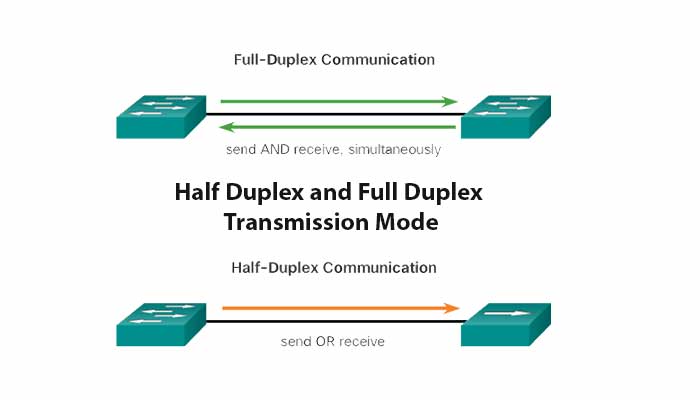The most incredible and effective function in machines is their ability to communicate and work with each other just like human beings despite not having an intellect and intelligence of their own. The communication between or over two devices is established over a telecommunication channel that is called the Duplex, a point to point system, on which the network switches operate. The three different kinds of duplex Half Duplex, Simplex, and Full-Duplex Switching. Simplex is the least useful in terms of telecommunication but it has its’ own uses and cannot simply be underestimated or overlooked. To know more Differences Between Half Duplex and Full Duplex Switching, keep reading this article till the end.
It is a simple one-way route where only the sender can transmit data to the receiver and the receiver has no way of replying to the sender except by using a different communication channel altogether.
The prime example of Simplex is Radio, where the voice of a Radio Jockey can be heard by million simultaneously but no one can reply to him except by calling from a mobile or telephone.
Only two of these duplexes are included in the Ethernet System for Local Area Networks (LANs); Half Duplex and Full Duplex. Which of these modes to use depend upon your requirements and these requirements originate from the kind of service you are in need of.
Hubs are suitably designed for half-duplex mode and only switches support full-duplex mode. To understand which mode of the duplex to use, one needs to understand the basic differences between them. Only then one may know which one is suitable for their needs and which one may be best left out.
Differences between Half Duplex and Full Duplex:
- One of the most important differences to remember between them is that on half-duplex mode, only one-way data transmission is allowed to take place at one time while on the other hand full-duplex bridges the communication gap by allowing data to be transmitted both ways simultaneously, safely and faster than the previous.
- Both of these modes being designed to operate on different devices makes a lot of difference in terms of data transfer speed. Switches are faster than hubs and perfect for full-duplex to function properly. Half duplex’s inability to provide simultaneous data transfer service further adds to the slowing down of its’ speed.
- In order to communicate, the hub needs a switch on the other side in running over a half-duplex mode but only the switches on both ends work in full-duplex mode.
These articles might be helpful for you
- Types of Transmission mode – Simplex, Half duplex and Full duplex
- What is Asymmetric Encryption, Cyphertext
Download Differences Between Half Duplex and Full Duplex Switching in pdf – Click here

